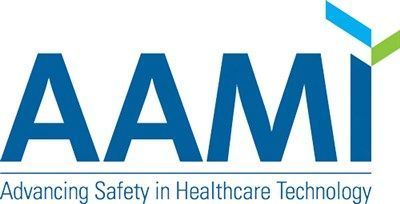
AAMI: Fewer Options for HTM Education
Those looking to enter the biomedical technology field now have fewer options when selecting an educational program, according to AAMI.
Wed Aug 31 2016

Those looking to enter the biomedical technology field now have fewer options when selecting an educational program, according to AAMI. The 11 Brown Mackie College campuses that offered degrees in biomedical technology are no longer enrolling new students in this program, and DeVry University is discontinuing its bachelor’s in biomedical engineering at seven of the 13 campuses where it was offered.
One of the reasons cited for these changes is low enrollment. Barbara Christe, the healthcare engineering technology management program director at Indiana University–Purdue University Indianapolis, said she also has difficulty attracting students. “Truly one of the greatest challenges I face is recruiting students into my program,” she said. “However, the lack of academic programs is a catch-22?the discipline cannot attract large numbers of high school students if there are no academic programs for the student to attend.”
There are questions about whether most students are even aware of healthcare technology management (HTM) as a career option, and whether current leaders need to do more to promote the field.
“Lack of awareness is a huge problem,” Christe said. “Money magazine didn’t call us one of the top five jobs you’ve never heard of for no reason.”
William Phillips, associate national dean for program development at DeVry University, correlates low enrollment in biomedical technology and clinical engineering technology programs to students’ fears that they will be pigeon-holed for the rest of their careers. “They look at it like: ‘I’m locking myself into this career for life.’”
For Phillips, the solution is not to prepare students to work in a specific industry, but to give them the tools that they will need to succeed in a wider career field. For example, he said, the steps involved in tasks such as troubleshooting or fixing a circuit are the same whether a person is working in transportation, manufacturing, or healthcare, so it is important to focus on teaching students these core competencies of engineering technology and then letting them learn about industry specifics as part of a specialization in their program of study, internships or co-ops, certificates, or “boot camps.”
Phillips said this is part of a mindset shift he has observed in higher education in which the focus is no longer on preparing “young people to be what they want to be when they grow up. Instead we are heading in the direction of preparing them to always be saleable for various career opportunities.”
Steven Yelton, a professor of HTM for Cincinnati State Technical and Community College, disagrees with the idea that young professionals will not commit themselves to one career or field. “I’ve heard this said about millennials, but honestly I have not found that within the biomedical profession. I find that most tend to stay in the biomedical field,” he said. “My students pick biomedical engineering technology [BMET] because it gives them more opportunities, not less. They feel like with a BMET major, they could work in hospitals or for biomedical companies, as well as for electronics companies. I find that electronics employers will hire BMET graduates, but hospitals will not hire electronics graduates unless there are no BMETs available.”
Recently, Cincinnati State decided to combine its technology programs to make one overarching program with a number of majors under it. This was a cost-saving measure for the college, Yelton explained, because of statewide budget cuts and the fact that enrollment for the college was down in general.
Cost has become an issue for many in HTM education. Biomedical technology programs are expensive to run, partly because medical technology is so expensive. For example, a state-of-the-art MRI machine can cost millions of dollars.
“Equipment is expensive, as is a biomedical program,” Yelton observed. “We have to think outside of the box to be successful.”
For Cincinnati State, this has meant partnering with local hospitals and medical equipment companies. “I’m fortunate that many of my labs are taught at a local hospital, and I couldn’t survive without the donations of equipment and supplies that I receive,” Yelton said.
For other programs, such as those at DeVry, this has meant developing four-to-five-month boot-camp programs that cover topics such as cybersecurity, networking, and automation in depth and turning to online platforms to educate students who cannot attend classes in person.
Yelton believes online content is useful as a supplement, but he is “not ready to give up on the hands-on experience completely.” He feels that teaching students “how to think and ‘figure it out’ specifically using medical equipment” helps prepare them for a “career for life.”
There is apparently no single answer on how to attract and educate more HTM professionals, partly because the issues facing the field are so complex. “It’s ironic that educators collectively can’t agree on the root of the problem,” Christe said. “It makes it difficult to solve.”
But the experts do agree on one thing: There is a need to think anew about the education of HTM professionals, especially in an industry that is expected to grow much faster than the national average and is already lacking qualified workers to fill open positions.
“The education of HTM professionals is a constantly evolving challenge because so much about technology itself is changing,” said Patrick Bernat, director of healthcare technology management at AAMI. “We’ve developed key resources for these professionals, and we will develop more as we learn about their changing needs and the demands of their jobs.”
